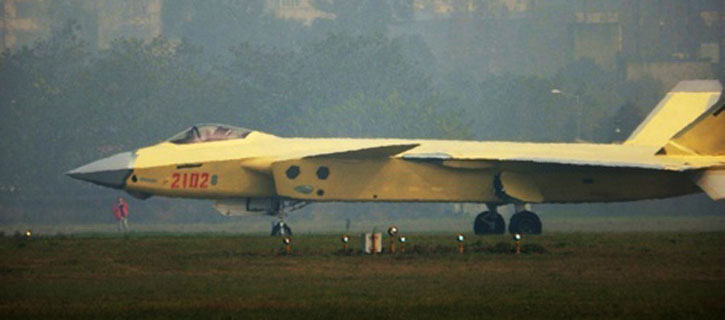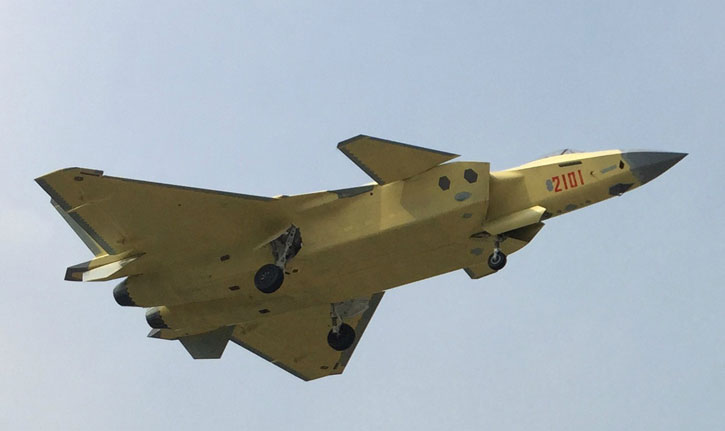Last December China’s Chengdu Aircraft Company (CAC) inaugurated the production line for China’s J-20 5th Generation, stealth fighter, that has since entered Low Rate Initial Production (LRIP). Two LRIP aircraft have already rolled off the line; the first began flight testing in January.
The Chinese People’s Republic Army Air Force (PLAAF) is believed to have received four J-20 jets, which have been tested and completed acceptance tests recently. The first front-line regiment is supposed to activate and receive aircraft by June 2017 and is expected to be combat ready by 2019. That milestone could be pushed forward, given the budget priority. The final requirement could be between 500 to 700.
The configuration of those LRIP planes is similar to the latest prototypes, 2016 and 2017 that were the pre-production and technology demonstrator variants. Nomenclature identifies the aircraft – prototypes and pre-production aircraft are designated 20XX while production versions are designated 21XX.

Chengdu’s No.611 Institute developed the plane. This large interceptor made its first flight in 2011. Two Russian-made Saturn AL-31F power the prototypes and first production aircraft accelerating it to a maximum speed of Mach 1.7.
Two lateral bays accommodate highly maneuverable PL-9/PL-10 IR missile. The main weapon bay can carry longer weapons can accommodate four PL-15 medium-range AAMs or the new PL-21 ramjet powered, long Range Air/Air Missiles, similar to the MBDA Meteor. Additionally, large air/ground weapons can be carried in this bay.





















